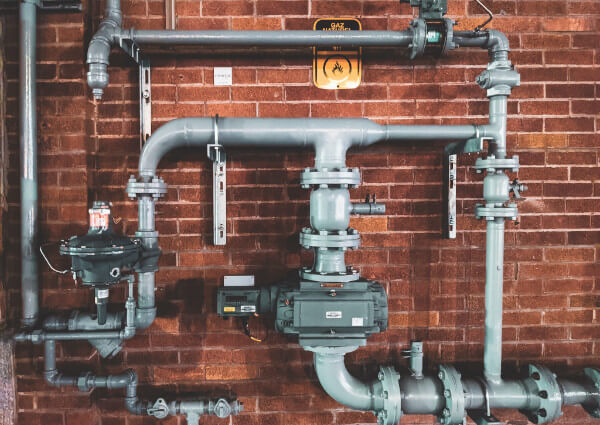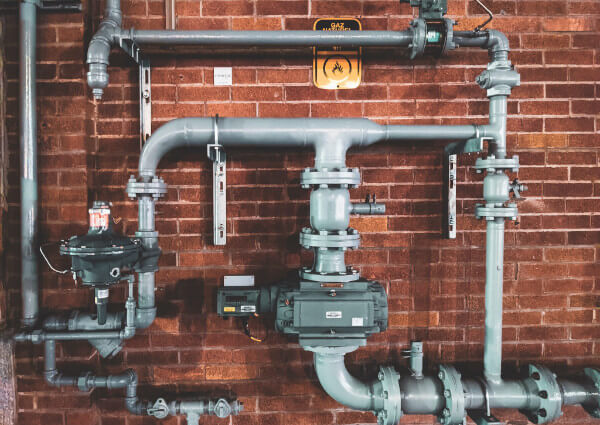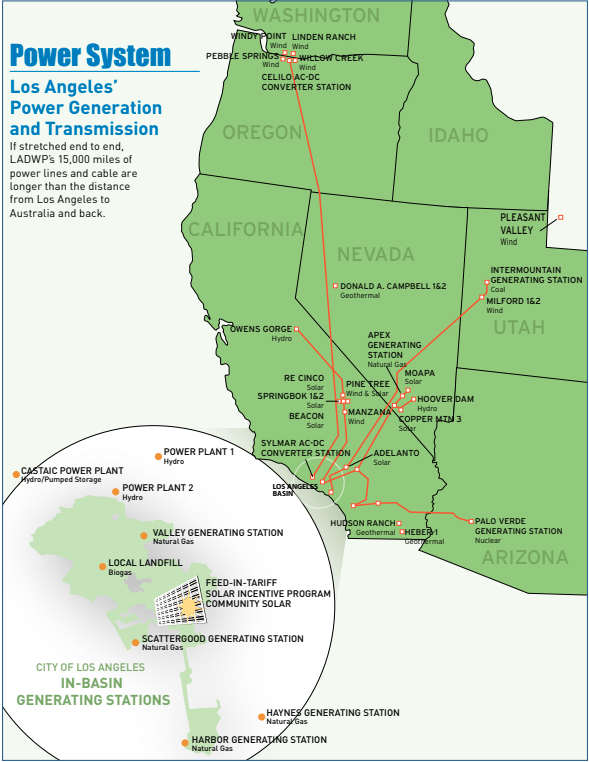
Where Does Los Angeles Get Its Electricity?

Have you ever wondered where your home’s electricity comes from? It’s a bigger question than you might realize! Every one of LA’s electricity-using structures connects to our gigantic, state-spanning, billion-dollar power system. Your humble home is one end of a story spanning hundreds of miles and involving thousands of people.
The Electrical supply Los Angeles uses every day is nothing short of an engineering miracle. We’ll give you the shocking truth about where the power that runs your coffee machine every morning comes from. Enjoy Mike Diamond’s guide to the Los Angeles electrical grid.
Who Makes Los Angeles’ Power?
The Los Angeles Department of Water and Power (LADWP) supplies all the power LA uses every day. The LADWP is the nation’s largest municipal utility. 9400 employees help manage an electrical system capable of generating over 7,880 megawatts of power. Overall, the LADWP power system supplies an average of over 26 million megawatt-hours of electricity to LA every year.
The LADWP was established in 1902 to deliver water to LA. In 1916, it also began distributing electricity. The LADWP is managed by five-member Board of Water and Power Commissioners selected by the mayor of LA and confirmed by City Council.
What Generates All of L.A.’s Power?
According to the California Energy Commission’s 2019 report, California generates its electricity via these means:
0.12% coal16.53% large hydro42.97% natural gas8.06% nuclear0.02% oil0.20% Petroleum/waste heat2.92% biomass5.46% geothermal2.67% small hydro14.22% solar6.82% wind
California is a national leader in renewable energy production. Every part of California–including LA–is quickly scaling up how much renewable energy it uses. The state hopes to get 50% of its electric power from renewable sources by 2030.
To accomplish this goal, the LADWP is in the process of implementing the Power Strategic Long-Term Resource Plan (SLTRP). The SLTRP is a 20-year plan for aligning LA with Senate Bill 350 and LA’s 100% clean energy initiative. As part of this plan, LA will eliminate coal as a power source, decrease natural gas use, incorporate more renewable energy sources, and more.

Where The Los Angeles Electric Company Gets Its Power
The LADWP gets the power it supplies to LA from many sources, both inside and outside of California. You may be surprised to know that your electricity comes from Arizona, Utah, Wyoming and Oregon. These sources include:
Hydro plantsNatural gas power generating stationsLandfill biogas converting stationsHydroelectric damsSolar plantsWind plantsGeothermal plantsNuclear power generating stations
All of these power sources are connected to LA via a massive transmission and distribution infrastructure. Moving and distributing LA’s power requires:
3,507 miles of overhead transmission circuits (across five states)124 miles of underground transmission circuits15,452 transmission towers6,752 miles of overhead distribution lines3,626 miles of underground distribution lines160 distributing stations21 receiving stations128,693 distribution transformersand more
Overall, 15,000 miles of power lines and cables are required to transport and distribute LA’s power!
How Electricity Gets to Your Los Angeles Home
This infographic explains the high-voltage journey electrical power makes to get to your home. We break down the steps in further detail beneath the graphic.

Phase 1: Transmission
1. Plant to “Step Up” Substation

Each of LA’s many power generators connects to a transmission substation (sometimes called a power plant).
Transmission substations “step up” the voltage to prepare the power to travel long distances through the transmission grid. Whenever an electrical current is conducted through anything (like transmission lines), it loses some power to electrical resistance. The higher the voltage of the electricity in the transmission line, however, the less electricity resistance wastes. By “supercharging” the generated power’s voltage, transmission substations make sure it gets to you without losing its effectiveness.
2. First Substation to Transmission Network
After converting low voltage power to very high voltage power, substations send electricity into transmission circuits. These circuits run from the transmission substation near the plant all the way to local distribution substations in your city. A single transmission line can successfully conduct electricity for up to 300 miles.
There are two types of transmission circuits:
Overhead circuits transmit electricity over long distances. They’re supported by the giant steel transmission towers you’re probably familiar with.
Underground circuits are used in high-density, urban areas where there’s no room for transmission towers. LA uses 124 miles of underground circuits.
Phase 2: Distribution
3. Transmission Network to “Step Down” Distribution Substation

Your power has already traveled hundreds of miles via the transmission lines to reach your area. Before it can enter the distribution grid, however, it must pass through another substation. Instead of charging up the electricity with more voltage, these transformers remove voltage to make it safe for distribution.
After passing through the transformer, electrical power enters a “distribution bus.” The distribution bus splits the power off into multiple different directions. LA uses 160 distributing substations to transfer its electricity into distribution.
4. Second Substation to Distribution Network
By now, your power is almost to you. After passing through the “step down” transformer and bus at the substation, power enters the local distribution network.
LA’s distribution networks is, as you can probably imagine, massive. The city uses 6,752 miles of overhead and 3,626 miles of underground distribution lines. These lines crisscross all over the city to supply power to every single connected structure.
5. Distribution Network to You!

Once the distribution line reaches your immediate area, it connects to a distribution transformer -either supported on overhead poles or buried underground.
Distribution transformers “step down” the amount of electricity running through power lines one more time. This process brings the electricity’s’ voltage down to around 240 volts, to make it safe for residential use.
This stepped down electricity travels via your home’s service wire from the distribution transformer all the way to your home’s meter box. The meter box records how much electricity is entering your home and the voltage of that electricity. Electricity passes through the meter box and into your circuit breaker, where it’s distributed throughout your home via your electrical panel.
Electrical Contractors in Los Angeles
By the time electricity reaches you, it’s had quite the journey. If you have questions about your home’s power supply or are concerned about the amount of electricity powering your home, fill out our quick and easy service form. One of Mike Diamond’s licensed technicians will be happy to make sure your family gets the power it needs to live comfortably.
The post Where Does Los Angeles Get Its Electricity? appeared first on Mike Diamond Services.
